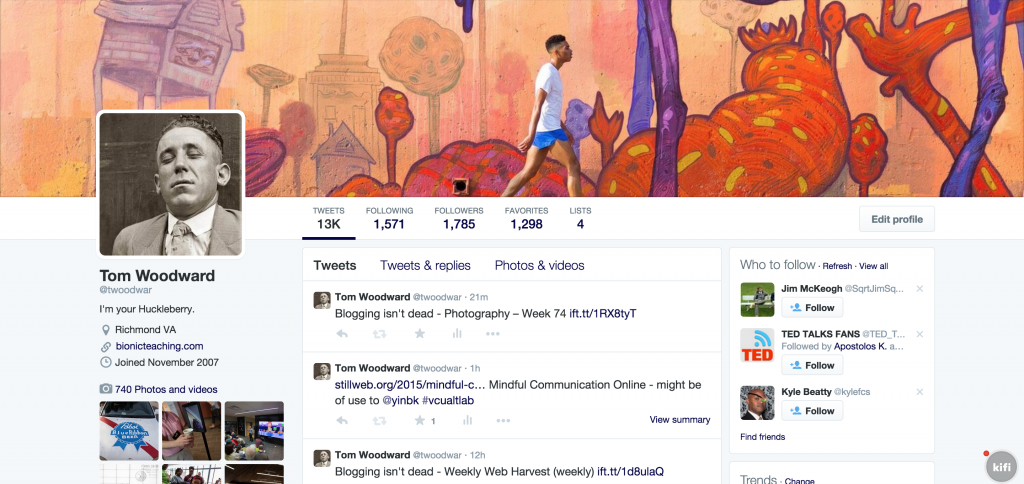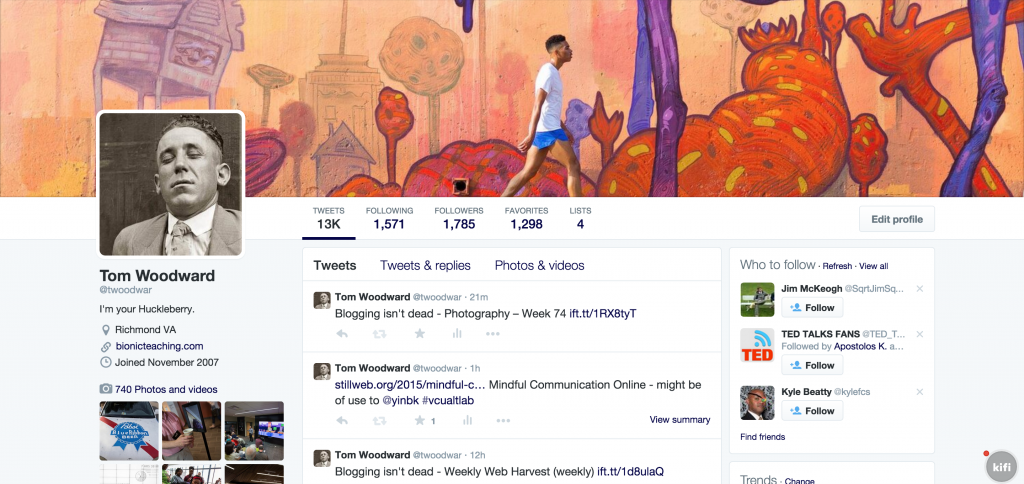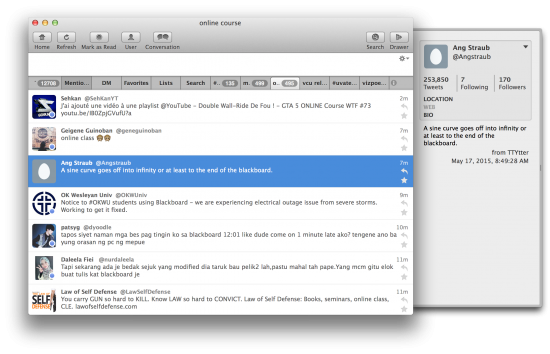
I joined Twitter in November of 2007 which is roughly seven and half years ago. That’s a fairly long time and both my use and my thoughts about Twitter changed quite a bit over that time. Consider that Twitter only produced about 5,000 tweets a day back 1 then compared to 50 million a day now.
I thought it’d be interesting to look back at my blog and see what I thought about Twitter in those early days.2 The first post I can find is from a few months after I joined and the post was titled My Secret Shame (best of twitter 1-30-08). The title alone lets you know I really was kind of embarrassed to be on Twitter. Clearly not too embarrassed to write about it in public but it still felt like it could be a waste of time.
Back in those days you couldn’t embed the tweets like you can now so I hand-copied in the text and attributed them but I linked to the author’s blog instead of the tweet itself. That shows pretty clearly that I saw the Twitter element as much less important. Surely you’d want to go to the blog itself. Other than liking three specific tweets I had this to say-
*I’m not advocating for twitter, I’m still debating it. Today was certainly a good day. I don’t see much use for it in the K12 classroom, maybe college (not saying there isn’t any, just haven’t seen anything decent- prove me wrong). I do see how it can be useful for communities of people interested in the same things.
A few months later I attempted a more analytical breakdown of what Twitter did that was interesting. I’ve changed most of my views since then.
At that time I described Twitter as both synchronous and asynchronous. I tried to look at it through the language of micro-blogging and the long tail. It’s interesting to look in the comments as I think that’s really where I proved I didn’t quite get it. Twitter is a conversation in an open room. Serendipity lurks in these open spaces. The value is in the fact that other people can see and respond to even the @ directed messages. The hashtag becomes a way to participate in a community conversation that is public. I didn’t really grasp the importance of light-weight-informal public conversation. It’s also funny to see quotes from me like –
I do always forget about the phone option. I always use twitter from my computer or ipod. I appreciate you reminding me about phones. I know I’ve got IM on my phone (which is old and sucks). I wonder how many kids do?
Things change.
Current Workflow – Consumption
I have used a variety of Twitter applications over time starting with TweetDeck, Janetter, and am now using Yoru Fukurou.3 I’m still trying to find something that works like Tweet Deck did before Twitter bought it. I recommend using some sort of application. It lets you save particular views by lists (people) or by topic (hashtag) which will let you dip back into conversations with regularity. You can see a screenshot of my Twitter application below. I have some long term saved items that focus on things like a variety of VCU-related hashtags, #ds106, MOOCs, and online learning but I also add other hashtags for things I’m involved in for the moment like conferences. I usually delete those event-related hashtags a few weeks after the energy of the event has dissipated rather than immediately but they do tend to get deleted.
I follow around 1,500 people. Those people are pretty diverse in terms of topics they’re interested in and the ways they use Twitter. I don’t consider any of Twitter things I must read. I want enough information coming across that I have more than enough to read at any moment. I want enough diversity that I’m feeling like I’m not reading about just one subject or hearing one side of things.
When people start using Twitter I tend to see a reluctance to unfollow people. They’ll continue to follow someone they don’t like out of a sense of social obligation.4 My suggestion is to be pretty aggressive in adding people initially and even more aggressive in removing people who aren’t giving you the kind of interactions/information you want. If you don’t get what you want from Twitter it means you didn’t do this. Whatever you need/want is out there but you have to build it and refine it . . . and refine it . . . and refine it. I tend to make major revisions around job changes or when I start to feel tired and depressed by the Internet.
You might even consider employing the “nuclear option” on occasion. Delete everyone. Start over. See who you remember enough to add from memory. See what new growth comes from a bare field. I do this with RSS feeds on occasion as well.
I have the Twitter app on my phone but I turned off notifications there a few months ago. I may turn them back on at some point but for the moment I am enjoying the peace. I still read tweets on my phone on occasion but I don’t really need the alerts the way I’m using Twitter currently.
Current Workflow – Creation
I post from 90-170 tweets a month. That breaks down to three to five a day. I think what I’ll see is that I tend to have 10 or 20 a tweets in day with some gaps days where I don’t post anything. I have requested my archive from Twitter and will see if that is true. It’ll be an amusing thing to visualize.
In any case, it’s a pretty lightweight investment in time and energy. It’s even less when you consider that some of the tweets happen automagically through things like IFTTT. If I post to my personal blog that will generate a tweet with a link to the post. If I put add “tweet” to a Diigo bookmark I save it will post it to Twitter. Little things like these allow for interesting expansions of your workflow without any substantial additional effort.

Current Workflow – Settings/Appearance
My current avatar image is not me. It is an Australian mugshot from 1928 of Thomas Bede. I found the image and the caption “This man refused to open his eyes” strangely poetic and representative of the futile resistance I often engage in. It leads to some odd meetings at times at conference when people say that I don’t look like my Twitter avatar but I find that kind of thing amusing.
My Twitter bio is “I’m your huckleberry.” from Tombstone. It’s not informative. It doesn’t hashtag me into any particular groups. I’m ok with that but it probably has some costs in terms of new people I’d like not finding me and, as a consequence, I don’t find them in return.
I prefer the somewhat odd persona I’ve created here. It echoes some of the diversity of what I post (I think. We’ll see what the archive shows.) It’s mean to be tongue-in-cheek in lots of ways. I don’t take Twitter too seriously but I try not to take anything too seriously.
1 You could read all of Twitter. Crazy.
2 It is sometimes rough to read my own writing from that far back but for you, dear reader, I shall persist.
3 That may be as much because I like the name as anything else.
4 Consider muting people if you love them in real life but struggle with their Twitter personas.


I wonder how twitter will change over the next 7 years? (if it still exists at that point). I have only been using it for a little over two years basically for consumption with a little creation but I think just like you’ve done here it’ll be interesting to see how my own use of twitter changes over time
I love when people do a kind audit/accounting of current versus past work practice. It helps me figure out and reconsider how I’m doing things too. Maybe a purge is in order? I certainly do feel too much a loyalty to old “follows” it’s true.